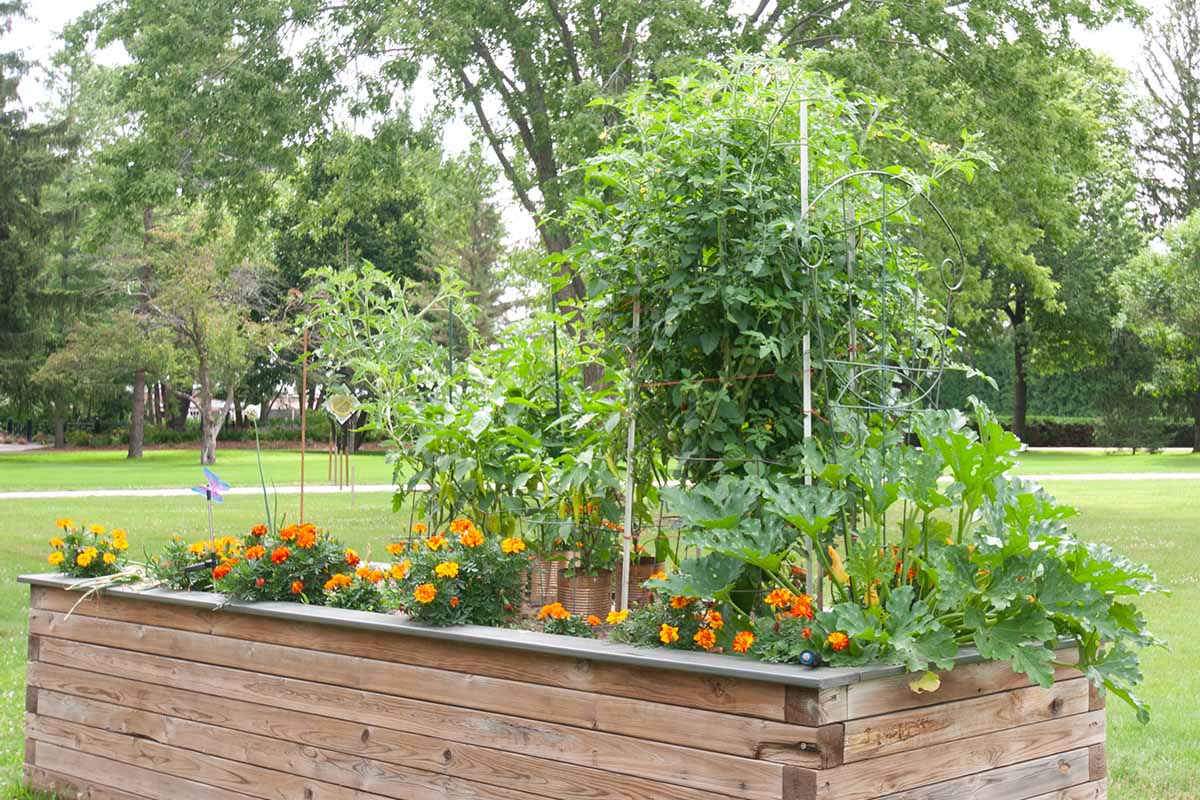The Perfect Plant Pairings: Plants That Complement Each Other
Companion planting is a gardening practice of planting certain plants together to benefit each other. By pairing plants that have complementary qualities, you can create a more productive and pest-resistant garden.
There are many different factors to consider when choosing companion plants, such as their sun and water requirements, their growth habits, and their pest and disease resistance. Some plants can help to attract beneficial insects, while others can help to deter pests. Some plants can improve the soil quality, while others can help to suppress weeds.
Here are a few of the best plant pairings:
- Tomatoes and basil: Basil is a natural pest repellent that can help to keep tomato hornworms and other pests away from tomatoes. Basil also improves the flavor of tomatoes.

- Carrots and onions: Carrots and onions have different nutrient requirements, so they won't compete for nutrients in the soil. Onions also help to repel carrot fly, a common pest of carrots.

- Cucumbers and nasturtiums: Nasturtiums help to deter cucumber beetles, a common pest of cucumbers. They also attract beneficial insects, such as ladybugs, which help to control other pests.

- Beans and corn: Beans fix nitrogen in the soil, which benefits corn. Corn provides shade for beans, which helps to protect them from the sun.

- Sunflowers and marigolds: Sunflowers attract beneficial insects, such as ladybugs and parasitic wasps, which help to control pests. Marigolds also repel nematodes, which can damage the roots of sunflowers.

These are just a few of the many beneficial plant pairings. When choosing companion plants, it's important to do your research and find pairings that are right for your specific garden.
In addition to the benefits mentioned above, companion planting can also help to create a more visually appealing garden. By pairing plants with different colors, textures, and heights, you can create a garden that is both functional and beautiful.
If you're new to companion planting, it's a good idea to start small. Try planting a few different companion plants together and see how they interact. Once you've had some success, you can start to experiment with more complex pairings.
With a little planning, you can create a thriving garden that is both productive and pest-resistant.
Do you want to know which plants complement each other? There are many benefits to companion planting, such as increased yields, pest control, and improved flavor. If you're new to companion planting, you may be wondering where to start. A great resource is Gardenia Inspiration. This website has a comprehensive list of companion plants, as well as information on the benefits of companion planting.
One of the most well-known examples of companion planting is the "three sisters" garden. This traditional Native American gardening method involves planting corn, beans, and squash together. The corn provides support for the beans to climb, the beans fix nitrogen in the soil, and the squash shades the soil and helps to suppress weeds.
Another popular companion planting combination is tomatoes and basil. Basil helps to repel tomato hornworms, and its strong aroma can also mask the smell of tomatoes, which can attract pests. Marigolds are another good companion plant for tomatoes, as they help to repel nematodes and other pests.
If you're looking for more information about companion planting, be sure to visit Gardenia Inspiration. This website is a great resource for gardeners of all levels of experience.
FAQ of plants that complement each other
Q: What are companion plants?
A: Companion plants are two or more plants that are planted together because they benefit each other in some way. For example, some companion plants attract beneficial insects that help to control pests, while others repel harmful insects. Some companion plants have different nutrient requirements and can help to improve the soil quality for each other. And some companion plants simply look good together and can be used to create a visually appealing garden.
Q: How do I choose companion plants?
A: There are a few things to consider when choosing companion plants. First, think about the purpose of your garden. Are you trying to attract beneficial insects? Repel pests? Improve soil quality? Once you know what you want to achieve, you can start to research companion plants that can help you reach your goals.
You can also consider the size and growth habit of the plants you're considering. Some companion plants, such as tomatoes and peppers, need full sun and plenty of space to grow. Others, such as lettuce and spinach, can tolerate partial shade and can be planted closer together.
Finally, think about the color and texture of the plants you want to include in your garden. Some companion plants, such as marigolds and nasturtiums, have bright colors that can add visual interest to your garden. Others, such as lavender and rosemary, have attractive foliage that can provide year-round interest.
Q: What are some examples of companion plants?
Here are a few examples of companion plants:
- Marigolds and tomatoes: Marigolds attract beneficial insects that help to control tomato pests, such as aphids and whiteflies.

- Nasturtiums and cabbage: Nasturtiums repel cabbage pests, such as cabbage moths and loopers.
- Beans and corn: Beans fix nitrogen in the soil, which can benefit corn. Corn provides shade for beans, which helps to protect them from the sun.

- Lettuce and carrots: Lettuce shades the roots of carrots, which helps to prevent them from bolting. Carrots help to loosen the soil, which benefits lettuce.

- Lavender and roses: Lavender repels aphids, which can be a problem for roses. Roses provide support for lavender, which can get top-heavy.

Q: How far apart should companion plants be planted?
The spacing requirements for companion plants will vary depending on the size and growth habit of the plants. Some plants, such as tomatoes and peppers, need to be spaced at least 2 feet apart. Others, such as lettuce and spinach, can be planted closer together, about 6 inches apart.
It's a good idea to check the plant tags or consult a gardening book or website to get the specific spacing requirements for the plants you're planning to grow.
Q: How do I care for companion plants?
The care requirements for companion plants will also vary depending on the plants. However, there are a few general tips that can help you care for companion plants.
- Water your plants regularly, especially during hot, dry weather.
- Fertilize your plants according to the package directions.
- Mulch around your plants to help retain moisture and suppress weeds.
- Monitor your plants for pests and diseases and take action as needed.
By following these tips, you can help your companion plants thrive and create a beautiful, healthy garden.

Post a Comment for "The Perfect Plant Pairings: Plants That Complement Each Other"